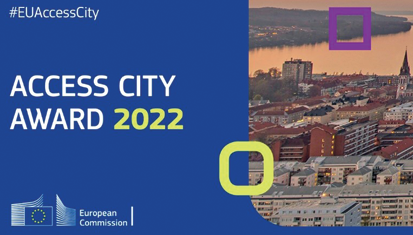An introduction to Navigating the digital world: a synthesis of the evidence
An introduction to Navigating the digital world: a synthesis of the evidence
Tom Fellows, Senior Researcher at Ecorys and member of the #FOOTPRINTS team, provides a preview of the findings from our latest publication ‘Navigating the digital world: a synthesis of the evidence’.
This review draws upon a comprehensive overview of the literature exploring the opportunities and risks young people face online, as well as how best parents, carers and professionals can support them to stay safe on the internet.
The opportunities and risks afforded by the online world
It will not come as a shock to read that those aged 24 and under are the most connected of all age groups. Many parents, carers and teachers will relate to young people spending their free time engaging in social media, gaming, listening to music, and watching videos.
What often remains unseen, however, is the extent to which the internet acts as a gateway to self-discovery, community participation, and opportunities for self-esteem. Our literature review highlights the importance young people attach to using the internet to explore their identity and sexuality in ways not possible offline. Research also shows that young people see little distinction between the online and offline – with such a large emphasis now placed on social media and gaming that participation in these activities has become essential for the maintenance of modern-day youth friendships.
Yet, for all the opportunities afforded by the online world, it is well documented that the internet can be a dangerous place. Things like violent or pornographic content, gambling, unregulated advertisements and hate speech are easily accessible to young people online, with concerns around excessive screen time, grooming and radicalisation also highly relevant. Our review explains how each of these online risks can lead to harm, with varying degrees of impact on young people’s physical and emotional wellbeing. Those experiencing offline vulnerabilities are also more likely to experience then online as well.
Our review also emphasises that the most prevalent risk to young people’s wellbeing on a day to day basis comes, not from other people or content, but their interactions with peers. The literature shows how peer-to-peer disagreements, cyberbullying, sexting, and sharing inappropriate images between young people can have far-reaching implications, impacting, not only a young person’s self-esteem, but also their “digital footprint” in the future. Managing a “digital presence” is therefore an essential part of everyday life for most young people, and the importance of doing so confidently and competently is more important now than ever before.
The nuanced role of the internet in young people’s lives
The literature demonstrates that young people and adults cannot always agree on what is necessarily a “risk” or an “opportunity” online. Various survey data shows that adults are likely to interpret online phenomena such as peer-to-peer conflict, sexting, and privacy differently to their younger counterparts. For instance, young people are less likely to be concerned about their “digital footprint” than adults, are less concerned about the “legal” and “emotional” ramifications of sexting than adults, and are often unwilling to label themselves as ‘victims’ of online bullying.
Explaining these trends is difficult. While one school of thought is that young people lack the age-related experience to effectively judge risk, there is also evidence to show that some risks are not as prevalent as adults might think. Ultimately, framing young people as ‘victims’ undermines their agency and ability to represent their interests online.
Looking after young people’s interests online
These findings have implications for the role of parents and schools in protecting young people online. A recent Ofcom survey shows how 90% of parents either supervise or have house-rules regarding online usage, with most parents also using technology and various communication strategies to support their children online. Our review shows that using a blend of meditation strategies does work and, often, these are welcomed to some degree by young people who appreciate the support and oversight.
Difficulties nonetheless develop in navigating the contentious space between what adults perceive as risks and opportunities in comparison to young people, particularly when dealing with adolescents. Research shows how young people will often avoid informing adults about incidents of cyberbullying or accessing inappropriate content for fear of having access to the internet restricted. There is also evidence to suggest that the platforms young people use and the language they employ is purposefully designed to evade parental mediation for the same reasons. Young people may also find it easier to avoid online scrutiny because, statistically, they have more digital skills on average than older generations. The fast-paced nature of the online world also makes it difficult for parents, carers and teachers to keep up with the latest trends.
An alternative approach – young people as the experts
The evidence we have synthesised shows that young people and adults often have contrasting views about the risks and opportunities online. Given the right tools, young people can take ownership of their digital presence and understand how to respond to inappropriate content, with access to external help or intervention where it is needed.
Rather than adopting a view where risk mitigation is the end goal, therefore, it is important to recognize young people’s capacity to manage their online lives, and the importance of controlled risk-taking online as a healthy part of adolescence, alongside experimentation in other spheres of their lives.
Rather than focusing on internet safety alone, we argue that it is just as important to create safe spaces for conversations between young people and adults about the digital world. In doing so, we can aim to improve levels of professional knowledge and understanding, and to unlock more nuanced support and intervention – support which is young person centered and guided by what young people consider to be important. It is this challenge that we set out to address with the #FOOTPRINTS project.
Read more about the #FOOTPRINTS project at:
www.schoolsdigital.com

12 October 2020
5 minute read


